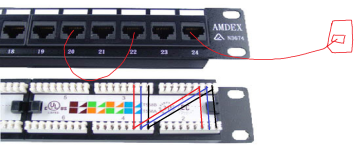Hi all,
So I've taken a job of setting up a network for a small business. Cat6 cable has already been run to each outlet in the shop (there's many rooms) and they all fall into a central location where I plan to have them all going into a patch panel.
That's all good, however the customer has requested that not all of these points be ethernet sockets. She wants each room to have access to the shared phone line (just a normal landline phone).
Now I understand it is achievable with a switch for internet (Modem -> switch -> patch panel) my question is is there a way of something similar for the phone line (Line -> ?? -> patch panel)
Hopefully I've explained this well enough!
Also, my understanding is this isn't a great way to go, ive mentioned VoIP packages with BT as an alternative but she's adamant she wants the phone line to go into each room.
So I've taken a job of setting up a network for a small business. Cat6 cable has already been run to each outlet in the shop (there's many rooms) and they all fall into a central location where I plan to have them all going into a patch panel.
That's all good, however the customer has requested that not all of these points be ethernet sockets. She wants each room to have access to the shared phone line (just a normal landline phone).
Now I understand it is achievable with a switch for internet (Modem -> switch -> patch panel) my question is is there a way of something similar for the phone line (Line -> ?? -> patch panel)
Hopefully I've explained this well enough!
Also, my understanding is this isn't a great way to go, ive mentioned VoIP packages with BT as an alternative but she's adamant she wants the phone line to go into each room.
Last edited:





